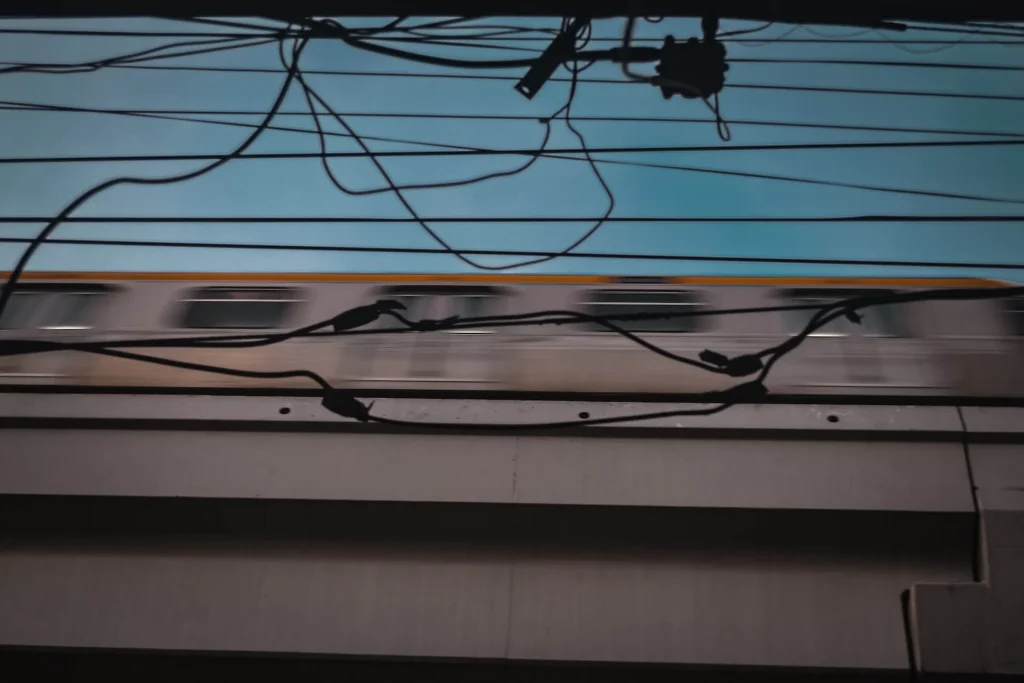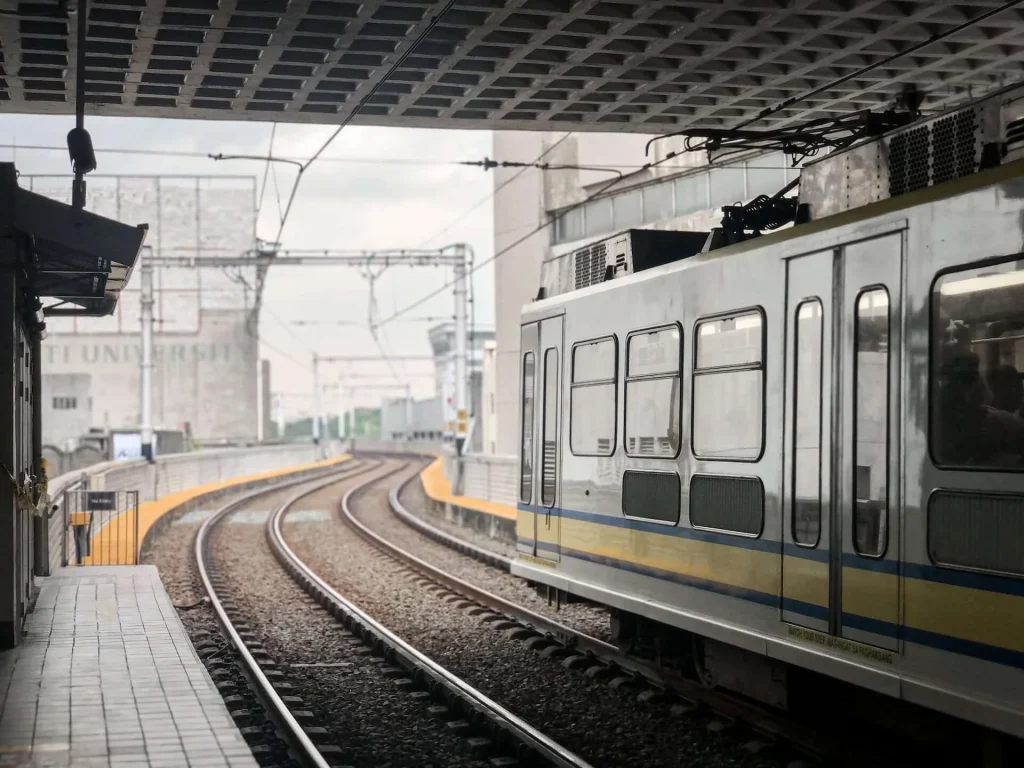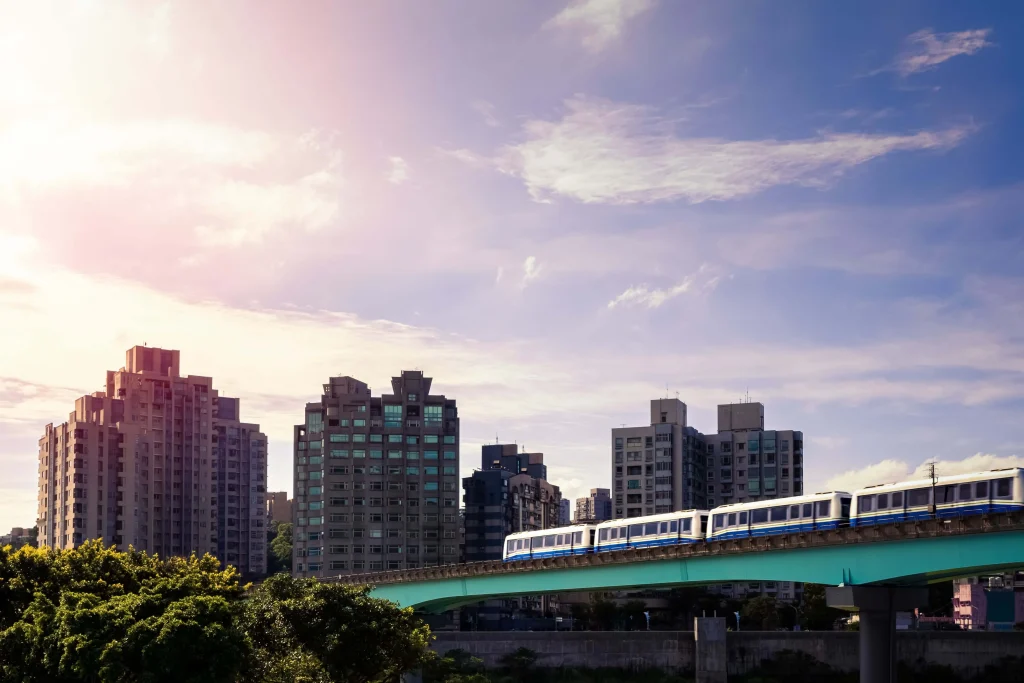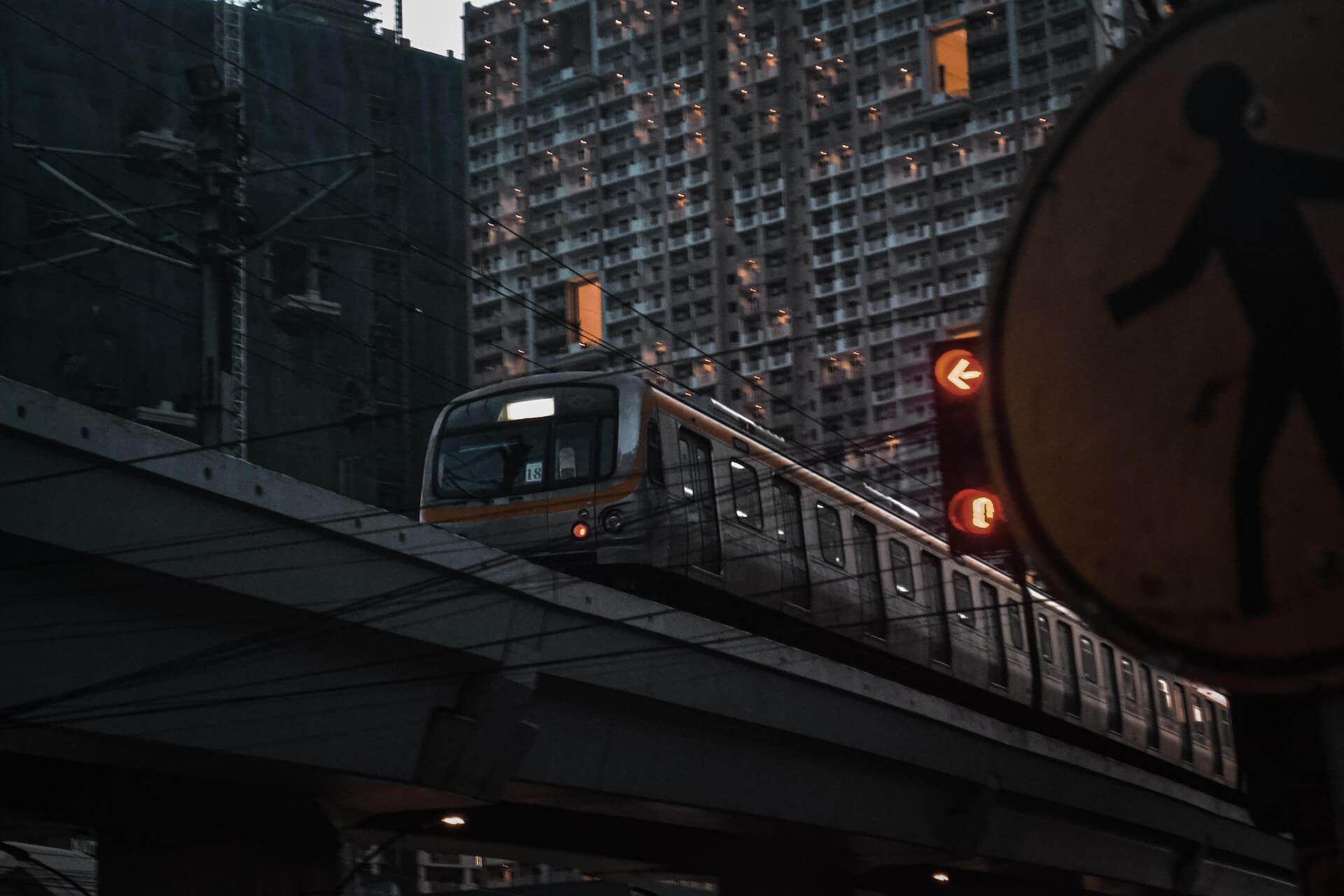Updated as of May 27, 2023
The LRT 1 or Light Rail Transit Line 1, is a railway system or LRT line owned by the Light Rail Transit Authority, and whose operations are facilitated by the Light Rail Manila Corporation. With 20 stations distributed amongst its 19.65 kilometers of railway length, the LRT 1 is one of the busiest public transport systems. Hence, despite being one of the busiest among the remaining three stations of the LRT in Metro Manila, it is gratifying to become aware of what LRT-1 and its extension project to Cavite offer to the public, especially for those who are planning to get a house and lot for sale in Cavite.
In this article, the readers will know different information about LRT 1 including its history, construction, stations, operations, expansions, and the ongoing project which is the LRT 1 Cavite extension. This will serve as a great guide for those who are still confused and not familiar with the different places in Metro Manila.

A Brief Comprehensive History of LRT 1
The purpose of the LRT 1 is to provide an alternative form of public transportation for Filipinos in the area of Metro Manila aside from riding jeepneys and buses. During the 1980s, with the arrival of the Light Rail Vehicles to be used for this LRT line, construction of the rail line became a big project that would first start at Taft Avenue. The LRT-1 would then become an elevated route that served as a way to lessen traffic and travel time within Metro Manila through the help of this transportation vehicle.
Initial Planning
The idea for the LRT 1 was created when a company called Freeman Fox and Associates conducted research on the public transit of Metro Manila. The findings of their study came to conclude with a recommendation for a light rail line within Metro Manila at the street level. Aside from that, another proposed option was to make the rail line underground. Thus, both options were rejected by the authorities.
This proposed project happened to be rejected because a street-level rail line would interfere with Metro Manila’s intersections, and an underground rail line would be unfeasible because of the level of Metro Manila’s water table under the ground. A revision of the Freeman Fox and Associates’ recommendation would then bring out the idea for elevated rail tracks for the LRT line.
Construction of the Railway System
The construction of the LRT 1 was funded by a loan granted by the Belgian Government that amounted to P300 million, with the Construction Development Corporation of the Philippines being the contractor for the LRT line’s construction. A type of foundation called driven piles, along with spread footings, comprised almost all of the LRT line’s construction. After some delayed construction in the early 1980s, the LRT 1 began its operations around 1985.
What Are the Stations in LRT-1 in Order?
Going to Metro Manila is truly difficult, especially for someone who came from the province or another country which is why, the Light Rail Transit will surely be a huge help to them. The LRT 1 consists of 20 stations that travel from the Baclaran station to Roosevelt station. To further discuss, here’s the list of the stations that will serve as a great guide for those who want to ride the LRT 1.
The list of the stations will be stated in order starting from station one until the 20th, the last station. The LRT 1 stations are as follows: Baclaran Station, EDSA Station, Libertad Station, Gil Puyat Station, Vito Cruz Station, Quirino Avenue Station, Pedro Gil Station, United Nations Station, Central Station, Carriedo Station, Doroteo Jose Station, Bambang Station, Tayuman Station, Blumentritt Station, Abad Santos Station, R. Papa Station, 5th Avenue Station, Monumento Station, Balintawak Station, and lastly the Roosevelt Station.
Through LRT 1 commuters can easily go to different places especially when they are in a hurry. Nevertheless, people can still able to go said places via other public transportation such as jeepneys, taxis, or buses.
How Does the LRT 1 Operate?
Apart from the annual maintenance project of the LRT line conducted every Holy Week holiday, the LRT 1’s operations are scheduled to run every day from 4:30 AM to 10:15 on weekdays and 4:30 AM to 9:45 PM on both holidays and weekends. The route of the LRT 1 runs along Taft Avenue towards Rizal Avenue and Rizal Avenue Extension, which would then reach EDSA towards the North and West Avenues. Hence, take note that the services in LRT 1 stop at 9:30 pm on Sunday and Saturday.
Through this entire route, cities such as Caloocan, Quezon City, Pasay, and Metro Manila are connected through this LRT line. At present, there is a South extension under development whose stations will include Cavite, Paranaque, and Las Pinas. Moreover, most stations have only one level, which is accessible from the street below by a stairway and contains the concourse and platform areas separated by fare gates. Some stations have a concourse level beneath the platforms. Line 1’s single-level stations, on the other hand, were not designed with accessibility in mind, as there were no barrier-free facilities such as escalators and elevators. Some stations, such as Monumento and EDSA, have concourse connections to surrounding buildings, such as commercial malls, for easy access. Some trains have wheelchair slots.
To make it easier for passengers to board and disembark quickly and conveniently, every four-car train includes 20 sliding doors on each side. Additionally, there are two installed air conditioners in each vehicle. Each train includes a Public Address System (PAS) that broadcasts an automated recording of each station stop. Music for a calm ride could be transmitted via the PAS. Through this, people may travel fast from one place to another minus the hassle that people usually experience when riding public transportation.

Are LRT-1 and 2 Connected?
Now that everything came back to normal, it is predictable that a huge percentage of employees and students will commute and use public transportation. With that, it is definitely important to be aware of this kind of information regarding the major railway networks to steer clear of any stress and frustrations when traveling in the Metro.
The Light Rail Transit Line 1 (LRT-1) is a network that goes through Pasay City, Manila City, and Valenzuela, with one terminus located on the northern border of Quezon City. On the other hand, the LRT-2 line, which runs just perpendicular to the LRT-1 and MRT-3 lines, serves a portion of Manila and Quezon City. Furthermore, The LRT-1 only crosses the tracks of the LRT-2 and MRT-3 at nearly opposite ends of the rail route. The LRT-2 and MRT-3 intersect with the other train lines in the same way. So is LRT-1 really connected to LRT-2? The answer is switching from LRT-1 and LRT-2 is only achievable via the LRT-1 Doroteo Jose Station and the LRT-2 Recto Station.
Is LRT-1 Connected to MRT?
North Extension
As time passed since the LRT 1’s construction, increasing urbanization has led to expansions of different forms of public transit, including the LRT 1. Initially, an extension for the MRT Line 3 was in discussion, however, President Arroyo, the Philippine President at that time in 1999, opted to pursue the extension of the LRT 1 by connecting it to the MRT 3 North Avenue.
Taft Avenue and Rizal Avenue are two of the main thoroughfares that LRT-1 travels through across the eastern part of Metro Manila. But keep the mind that Roosevelt and Balintawak stations pass over EDSA. On the other side, MRT simply passes through EDSA. The MRT is connected to LRT 1 at both ends. This expansion also called the North extension of LRT 1, would come in 3 parts: a viaduct construction, power supply construction, and construction of the stations that would be placed along the 5.7-kilometer North extension.
Expansions in the Capacity of the LRT 1
With the LRT 1 serving as another form of public transportation, it is expected that the LRT line to be utilized by many citizens. In order to keep up with the demand for the LRT line’s services, capacity expansions are done so that more passengers are accommodated.
First Phase Capacity Expansion
For the first phase of capacity expansion, the LRT 1 was upgraded by procuring four-car trains and converting two-car trains into three-car trains. This expansion was done under a 4.1 billion budget that aimed to resolve the inability of LRT 1 to continue its services because of traffic congestion.
Second Phase Capacity Expansion
A continuous increase in demand resulted in the second phase of capacity expansion of LRT 1. Through being funded by a loan from the Japan International Cooperation Agency, the second phase of capacity expansion became possible. In this expansion, air conditioning units were installed and repaired for the 1100 and 1000 class trains of the LRT line. Moreover, four-car trains were procured, along with improvements to the communications technology of the LRT line.
Which LRT Will Be Extended in Cavite?
Eight new stations of the LRT-1 Cavite extension will connect Pasay City and Bacoor, Cavite, shortening travel time from one hour and thirty minutes to twenty-five. The 11.7km Cavite extension of Light Rail Transit Line 1 (LRT-1) would have four parts that will be finished by 2028, according to the Manila Light Rail Transit Authority (LRTA).
In order to allow for the earliest possible start of complete construction, LRMC has already started preliminary work on the remaining portion. The expansion will operate at a commercial speed of 60 km/h but is planned to operate at 80 km/h. Aside from that, it will extend the current railway network by 11 kilometers, and it can carry up at least to 800,000 passengers daily. Additionally, it is anticipated to accelerate and improve business development near rail terminals. Therefore, commuters can look forward to comfortable and convenient rides.
For this much-awaited LRT-1 expansion, LRMC is collaborating with Bouygues Travaux Publics as the Engineering, Procurement, and Construction (EPC) contractor. A major player in the construction industry with operations in more than 80 nations across five different continents. Bouygues Travaux Publics is a specialist in undertaking large-scale projects involving tunnels, engineering structures, as well as infrastructure for the road, port, and rail systems.
The Cavite Extension Project
Reclassified as the Green Line back in 2012, plans for LRT 1’s South extension or the LRT Cavite extension were brought back to attention in the same year. With the aim of extending the LRT 1’s route to Paranaque and Cavite, the LRT 1 Cavite extension aims to connect Bacoor and Las Pinas to the Mega Manila railway network through an extended line.

The route of the LRT 1 Cavite extension will pass through Quirino Avenue to Harrison Avenue, extending the existing system past the Taft Avenue Extension intersection and Manila-Cavite Expressway. The route would then continue past the Paranaque River, Ninoy Aquino station, and Las Pinas-Bacoor Boundary Bridge, until the future Niog station located in Bacoor, Cavite is reached. A person that is looking for a house and lot for sale in Cavite may ride the LRT 1 at this station to easily travel and avoid the busy streets of Manila and South.
Overall, the LRT 1 Cavite extension covers 11.7 kilometers of the elevated railway that is comprised of eight stations, like an existing Baclaran station, and Santos station. Upon completion of the LRT 1 Cavite extension, the railway line or LRT line will be able to provide railway transit to the south of the Metro Manila area, which could enable someone with a house and lot for sale in Cavite to utilize the LRT 1.
What are the Stations of LRT 1 Cavite Extension?
The first phase of the 11-km extension is 7 km long and includes five additional stations: Redemptorist Station, which is 56% finished, MIA Station, which is 61% wrapped up, Asia World, which is 50% done, Ninoy Aquino Station, which is 55% finished, and Dr. Santos Station, which is 60% constructed.
Check Out Ponticelli, Our Subdivision Along Daang Hari!
The 18.1-kilometer LRT-1 Cavite Extension project, a public-private partnership initiative, will have eight stations and intends to extend the railway line by 11.7 kilometers from Baclaran to Bacoor, Cavite. Since the project’s development began in September 2019, the LRMC reported that the progress rate for both the structural and rail system works has reached 82.7 percent as of March 2023.
With the LRT 1 Cavite extension project, people may come to different places in the easiest way possible. The project provides a bright future both for the commuters and the business owners because of the said modernized transportation. Those who are working in the Metro but live in the South will certainly benefit from this especially when they are so fed up riding other public transportation that is too hassle to get a ride. This project is expected to boom when it is fully completed and ready to operate.
LRT-1 has been projected to reduce traffic congestion on the roads, reduce air pollution, create a cleaner environment, save significant amounts of time traveling, have significant economic benefits, and improve commuters’ quality of life as part of the national government’s effort to give the public an alternative form of transportation. The stations’ accessibility by a large number of people creates prospects for business establishments, retail, and office expansion that speed up urban regeneration.
Read More: LRT-1 Cavite Extension: Operations Starting In 2024


